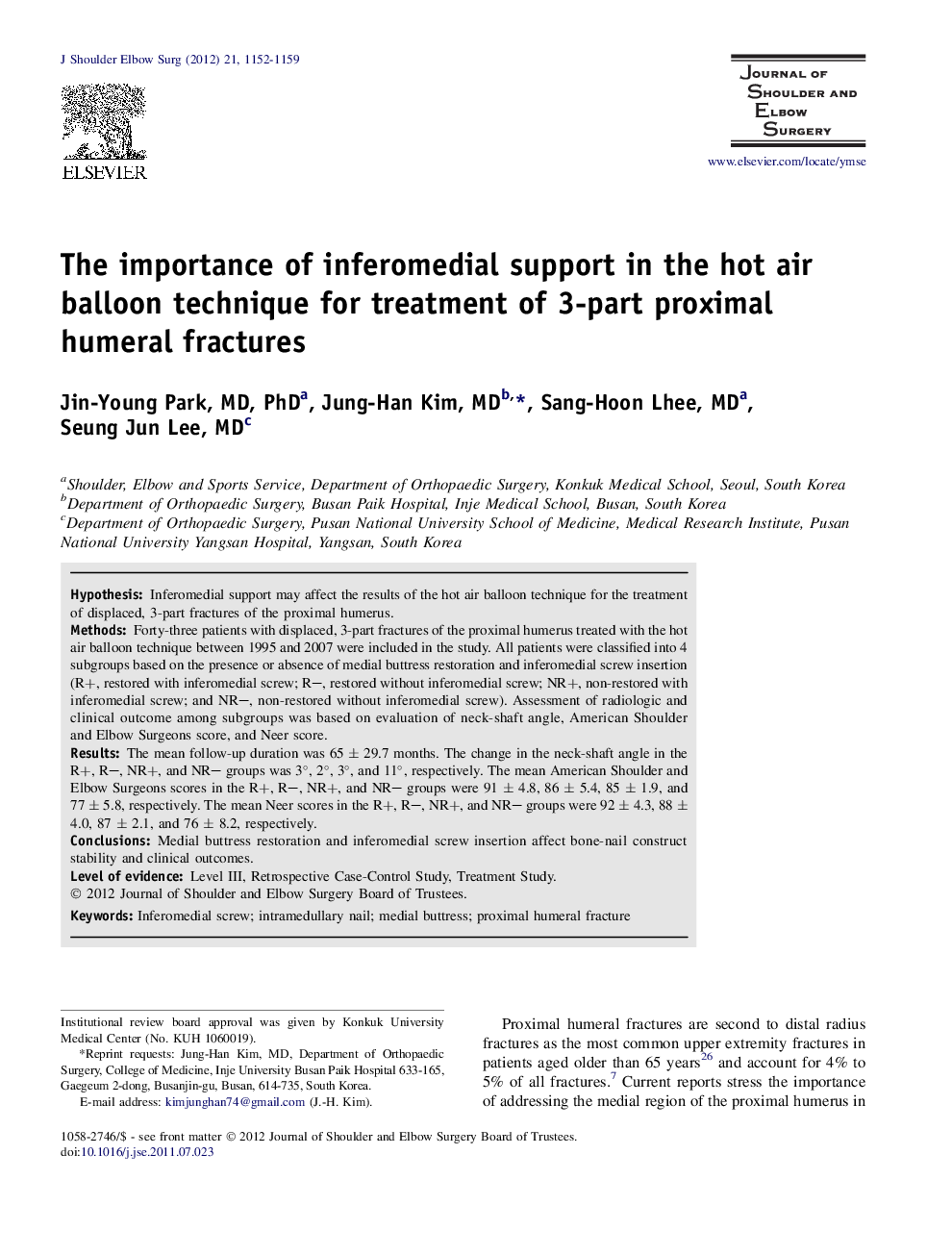| Article ID | Journal | Published Year | Pages | File Type |
|---|---|---|---|---|
| 4074321 | Journal of Shoulder and Elbow Surgery | 2012 | 8 Pages |
HypothesisInferomedial support may affect the results of the hot air balloon technique for the treatment of displaced, 3-part fractures of the proximal humerus.MethodsForty-three patients with displaced, 3-part fractures of the proximal humerus treated with the hot air balloon technique between 1995 and 2007 were included in the study. All patients were classified into 4 subgroups based on the presence or absence of medial buttress restoration and inferomedial screw insertion (R+, restored with inferomedial screw; R–, restored without inferomedial screw; NR+, non-restored with inferomedial screw; and NR–, non-restored without inferomedial screw). Assessment of radiologic and clinical outcome among subgroups was based on evaluation of neck-shaft angle, American Shoulder and Elbow Surgeons score, and Neer score.ResultsThe mean follow-up duration was 65 ± 29.7 months. The change in the neck-shaft angle in the R+, R–, NR+, and NR– groups was 3°, 2°, 3°, and 11°, respectively. The mean American Shoulder and Elbow Surgeons scores in the R+, R–, NR+, and NR– groups were 91 ± 4.8, 86 ± 5.4, 85 ± 1.9, and 77 ± 5.8, respectively. The mean Neer scores in the R+, R–, NR+, and NR– groups were 92 ± 4.3, 88 ± 4.0, 87 ± 2.1, and 76 ± 8.2, respectively.ConclusionsMedial buttress restoration and inferomedial screw insertion affect bone-nail construct stability and clinical outcomes.
